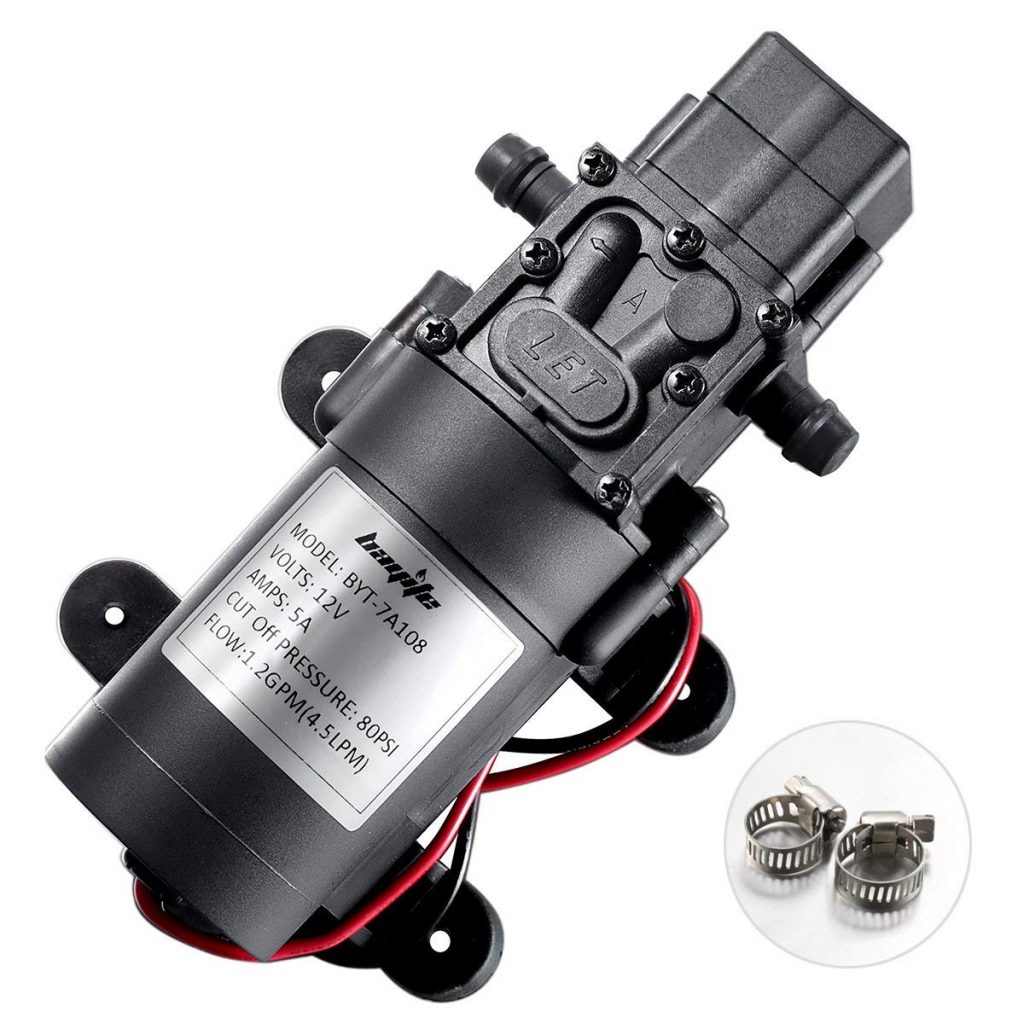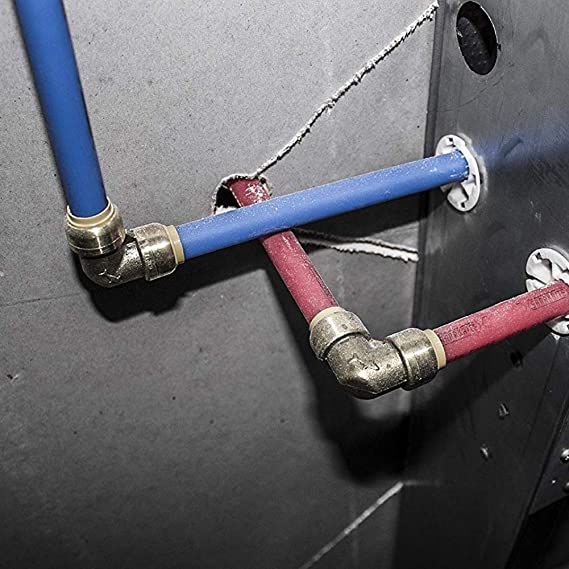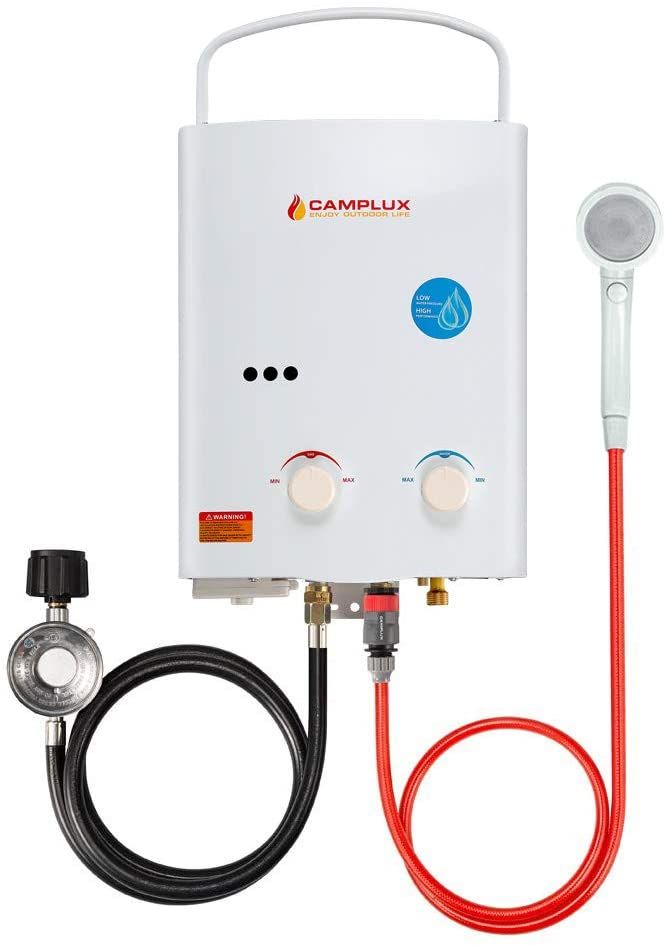Having a supply of water is possibly the most essential thing you’ll need in your camper van. Cooking, drinking, washing, bathing… Water is essential for just about every aspect of living.
This article covers the different types of water systems you might want to have in your van, from the most basic to the most advanced, and everything else you could want to know about storing water in your van.
Water capacity
Figuring out how much water you’ll need to carry on board will depend on two things: how much water you use on average a day, and how long you plan to go between refills.
If you’re frugal with water and only shower around once a week (welcome to van life) you can get away with only having to refill your tanks once every week or so, but if you plan to consume water as if you were in a house or you have a family on board then you’ll need some added water storage capacity.
Showering generally uses around 4L or 1 US gallon per minute depending on your water pressure. Washing the dishes can use anywhere from 2-5L (0.5-1.5 gal). Doing a load of laundry by hand could use upwards of 9L or 3 US gal. But these are just estimates.
You’ll need to have a good think about your personal needs, what you plan to use water for, how much each daily task will use and how often you’re able to fill up. It doesn’t have to be exact, but a ballpark figure is essential to continue onto the next steps.
Weight
Weight is another important factor to consider when designing a water system, not just your van’s payload but also how much weight you might be lifting if you need to remove your tanks to refill them.
1L of water weighs 1kg
1 US Gallon of water weighs 8.35 pounds
Water Tanks
Fresh water refers to the tank you will use to hold clean water for washing, drinking or both. This is the bare minimum you will need in order to keep a supply of water on board your van.
Grey water refers to the tank which will hold any waste water that comes from your sink such as washing up water.
Black water refers to the tank that will hold potentially harmful waste from your toilet, usually sterilized with chemicals.
Water tanks can be installed inside or underneath the van, and they can be removable or fixed in place.
You can empty water tanks at RV dump stations and campgrounds with facilities.
Water Pumps
A foot pump is a manually operated pump that works by applying pressure with your foot.
A hand pump is a faucet that draws water by pumping a handle up and down.
A 12V pump is an electrically-powered pump that draws water from a tank via a pressurized system and is operated either by sensing a drop in water pressure or manually via a switch.

Types of pipe
Push fit plumbing is lightweight and easy to install, even with no knowledge of plumbing whatsoever. We recommend using John Guest Polyethylene Speedfit Pipe although other brands are available. The connections you need will depend on the layout of your water system, but you’ll need elbows to plumb around corners, straights to support long lengths of pipe and equal tees if you plan to connect two water systems together (i.e. hot and cold). There are plenty of online tutorials to guide you through the installation.
Copper pipe isn’t recommended for vans simply because it’s so heavy and can rattle loose when driving, unless the tanks or faucet you’ve purchased have no other way of being connected, but you’ll want to consider this beforehand. We recommend Mueller Copper-Tubing 25ft – $27.34.
PEX pipe is super flexible and easy to use, and comes in red, blue and white to help you easily distinguish between hot and cold. We recommend SharkBite PEX Tubing and an iCrimp Ratchet PEX Cinch Tool to get you started.

Safety
Not all plumbing pipe is food-safe, so if you plan to drink from your water tanks then make sure to check before purchasing.
Keeping your water tanks clean and sterile is an important task as sitting water can quickly become slimy and grow bacteria such as legionella.
Flush them out with cleaning solutions or natural products such as vinegar or bicarbonate of soda regularly, or opt for a leave-in water sterilizer such as Milton.
For this reason you may want to consider carrying a separate source of clean drinking water and save your tanks for washing only.
Placement
Planning out the placement of your plumbing set up is the most important part of installing a water system in your camper van. This will determine how much plumbing you need, how many fittings, where the water will be stored and how it will flow.
Your water tanks will occupy the most space in your van, but you have options. Smaller tanks can be built into the kitchen cabinets, usually under the sink, or into a service area that hides beneath your bed or seating. Underslung water tanks mounted to the bottom of your van will give you more interior space and overall water capacity, but if you’ll be traveling to cold climates you’ll want to consider storing them indoors or attaching a tank heater to keep your water supply from freezing solid.
Sketch out a rough plan of your van’s layout, take some measurements and note them down, and don’t forget to add 10% extra when purchasing piping to account for cuts.
Example set ups
Below are three example setups of how you could go about installing a water system in your camper van. There are so many different set ups available, each one unique to the person building it, so feel free to mix and match ideas or use these as a basis to design your own plumbing system.
Gravity fed
You will need:
Installation:
A gravity-fed water system is just about the simplest set up you can create to get running water in your van conversion. It involves suspending a portable water container with spigot over a sink which can be no more than a removable bowl that can be emptied into a bucket or portable waste water container below the countertop. This is the simplest method of dispensing cold water with virtually no components to install or maintain, and for hot water you need simply to invest in a stovetop kettle such as this Riwendell Kettle which is a perfectly sufficient means of heating water to wash up, clean clothes or for a spruce up with a washcloth.
Having water in your van doesn’t need to be expensive or complicated and this simple system demonstrates just that.
Manual pump system
Parts:
- Foot-operated pump
- Under sink fresh water supply
- Under-sink waste water tank
- Flexible sink drain hose
- 1/2” flexible water hose
- Hose clamps
- Portable shower
Installation:
A manually-operated pump is a simple, cost effective way to run water from your tank to your sink. It can be done using either a hand pump or a foot pump, but the set-up is fundamentally the same.
The base of the system is the water storage. A common place to store water is under the kitchen sink, but under the bed or inside a bench work too. You’ll want a fresh water supply like this 5 gallon jug and a waste water tank like this 6 gallon one, secured down tightly to prevent them from moving during transit (such as with ratchet straps or bungee cords).
Then you’ll need to run a flexible water hose from the fresh water tank, through the inlet and outlet on thefoot-operated pump and up to the faucet, using hose clamps to secure each connection to prevent leaks. If using a house faucet it may require specific connectors or adapters to make it fit.
Finally you will need to fit a flexible sink drain hose like this one from Camco to direct the waste water out of the sink and into your chosen grey water collector.
We recommend using a portable shower like this one from Nemo which can be filled with hot or cold water and used outdoors or in for an instant shower, or this Coleman portable water heater for a portable hot shower in a box. It runs much like a tankless water heater, which we’ll cover how to install in the next section.
12V electric water pump system
Parts:
- Shurflo 12V 3.5 GPM fresh water pump
- Accumulator Tank
- Camplux 1.58GPM Portable Propane Water Heater
- Underslung fresh water tank
- Underslung grey water tank
- Hose
- Hose clamps
- Water inlet hatch
Installing an electric pump into your plumbing system will give you on-demand running water similar to what you’d expect in a house. They run on 12V which uses virtually no electric and an accumulator can be added to the system to make the water run more steadily and also so a small amount of water can be dispensed without needing to activate the pump every time.
This system begins at the fresh water tank, which may be installed underneath your van to use up ‘dead space’, give you more room inside and added water capacity.
Making sure the system is airtight you will run a length of hose to your 12V fresh water pump using hose clamps to seal the ends, then from the pump out to your sink, shower etc. If you install the pump against a solid surface it will prevent excess noise from vibrations, and an accumulator tank will also help to decrease noise and the frequency you will need to run the pump. At this point you can wire in a switch to turn the pump on and off, or it will run automatically when it senses a drop in pressure in the system as you open the tap.
Install a drain hose into your sink which will run back down to your grey water tank- no pressure is needed for this system as it the water will run freely downwards.
You can also install a water inlet hatch in the side of your van for easy refilling, although it does mean cutting a hole through the bodywork which not everyone will be comfortable with.
Finally, for hot water, we recommend installing something like the Camplux Portable Propane Water Heater which can be plumbed into the system for an indoor wet room and hot running water from the sink, or simply used as outdoor shower.
A portable shower works by using an attached propane bottle and regulator to heat up a heat exchanger inside. As water flows over the heat exchanger, aided by a 12V pump, it heats up instantly and is dispensed via a shower head. The ignition is powered by D-cell batteries inside the unit, which you will occasionally need to replace.
Accessories
Tank heater pads to prevent your tanks freezing in winter
Water tank level monitor to know when to fill or empty your tanks
Expandable coil garden hose for easy refilling
So that’s our rundown of how to get running water in your van. There’s so many different set ups ranging from simple to complex, and we hope our guide has inspired you to create your own unique camper van water system.





